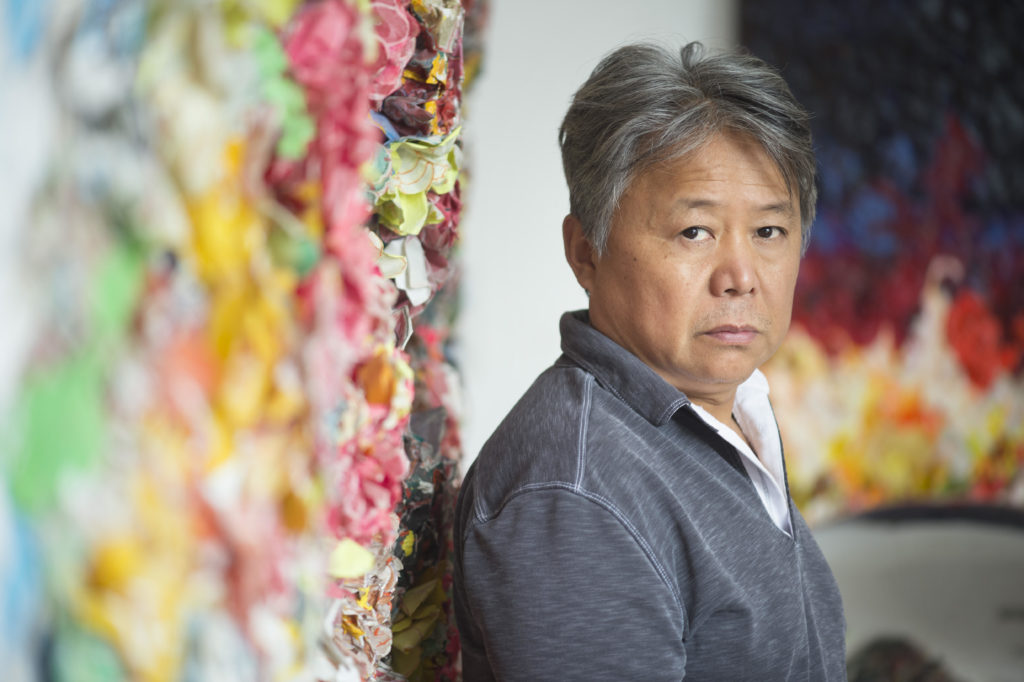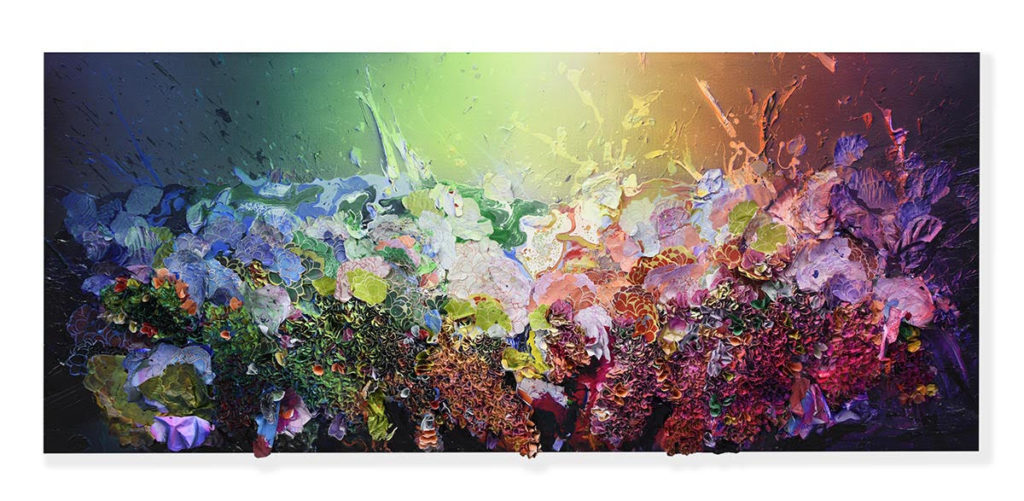How Zhuang Hong Yi’s Lush Flowerbed Canvases Symbolize In His Chinese-Dutch Identity


Artnet Gallery Network

Chinese-born artist Zhuang Hong Yi made the Netherlands his home for decades and in those years formed a powerful relationship with Smith | Davidson Gallery — the first gallery to show his work internationally. A decade after the artist and gallery’s first collaboration, Smith | Davidson Gallery is toasting the artist’s contributions with “In Bloom 2020: A Month In Celebration of Zhuang Hong Yi” — a global set of concurrent exhibitions at the gallery’s three spaces in Amsterdam, Miami, and Mexico City.
Zhuang, who started painting in 1982 while attending the Sichuan Academy of Fine Arts, is best known for his “Flowerbed” series of kaleidoscopically colorful canvases, filled edge-to-edge, with thickly impastoed, almost sculptural renderings flower buds. The artist denies the influences of any one artist on his work; rather he says he finds inspiration in the small beauties of the natural world around him, particularly flowers.
On the occasion of the artist’s celebratory exhibitions, we spoke with Zhuang, who told us what’s behind his obsession with making petalled creations, why he came to the Netherlands in the first place, and what his paintings’ color choices say about his mood.

Zhuang Hong Yi, Flowerbed Colorchange (2019). Courtesy of Smith | Davidson Gallery.
You’ve said that specific artists haven’t influenced your style. What does influence you then?
I find and have always found my inspiration through daily life and the beauty that one comes across every now and then, even just a simple bright flower during a stroll. I have been traveling with my family more frequently over the last couple of years and find a lot of inspiration in different forms of nature and culture during these journeys. Every time I see something unique, I always save that memory in the back of my head and recreate it once back in the studio, either consciously or subconsciously.
What are the origins of the recurring flower motif so often found in your artworks?
The flower motif in my work is inspired by the Chinese symbol meaning prosperity or good fortune. The lotus flower, in particular, I often use for this reason. The “Flowerbed” series are made by adding one “flower” at a time, requiring a lot of patience. In a way, it can be seen as a representation of the ways in which farmers patiently plant and harvest their land in the countryside in China. The idea for this motif popped into my head when I first came to the Netherlands and saw the beautiful flower gardens for which the country is so famous. Throughout the years, I gradually started to use the flower more frequently, experimenting with its form and colors.
For the last couple of years, I’ve hoped that my flower works send vibe of positivity to those who see them. The world feels like it’s becoming darker and darker—and with all the negative news we sometimes get overwhelmed. Hence, my wish is to let people momentarily forget about all the negativity, and focus on the beauty and good fortune the flower represents.

Zhuang Hong Yi, Landscape (2019). Courtesy of Smith | Davidson Gallery.
Your recent paintings’ colors are very brilliant and often applied with a thick impasto. Why are you attracted to these colors? What is their effect on the viewer?
Although I also have many other softer, maybe more simplistic paintings that have a more calm and mellow feeling, recently I have been experimenting a lot with different kinds of combinations of more vibrant shades. I cannot give a definite answer to why I am attracted to these colors, but I guess they are just an expression of my feelings and mood.
For example, when I feel extremely motivated and happy, I tend to paint more aggressively with the use of thicker and more vibrant impasto. I see it as unleashing my inner creativity—I often get more motivated as I paint and in the process create thicker layers and complex combinations of colors as I go. On my calmer days, I tend to paint with colors like soft pink and soft blue, which is more like a peaceful meditation for me.
With both styles, I think the feelings (and its effects) felt during the time of painting certainly pass on to the viewer.
People know you mostly from your “Flowerbed” series, but you have a very diverse body of work including landscapes and sculptures. Could you tell us something about the overlaps and differences?
The main difference between the flowerbed series and the landscape series lays is not so really in the use of materials (as they are mostly all made of traditional Chinese rice paper and acrylic), but more in the way of making them.
The flowerbed series is made by patiently folding and “planting” the flowers one at a time on the canvas. The creativity of this series lays both with the patience it takes to make the works and with the layers of color choices that bring the flowers to life. My landscape series are made simply by brush, but, the energy it takes for me to constantly come up with new designs as I paint and eventually express it on a big canvas, is far more than when it comes to the flowerbed paintings. So even though both series share the same materials and often the same message, the creativity I try to express is quite different.
The sculptures can more be seen as me trying to discover other areas within my artistic knowledge and potential. I sometimes make sculptures of heads that are quite different in style compared to my paintings, more serious perhaps, and the result of moments when I’m thinking very openly and experimentally.
Could you tell us about your relationship with the Netherlands?
I moved to the Netherlands when all I really wanted to do was to come and explore Europe during my years as a student. I only came to the Netherlands because I thought it was one one of the leading countries in the art world, I often heard of the big Dutch names such as Van Gogh, Mondriaan, and Rembrandt. And I knew two people who lived here whom I met in China. After my studies in Groningen, I got the opportunity to get a permit for the Netherlands. I decided to take that chance and further pursue my artistic career here in Europe. So I based myself in the Netherlands for many years to come from that moment on, which eventually lead me to form more and more relationships within the Dutch, and later on the global art world.
“In Bloom 2020: A Month In Celebration of Zhuang Hong Yi” is on view at Smith | Davidson Gallery’s spaces in Amsterdam, Miami and Mexico City through July 4, 2020.
